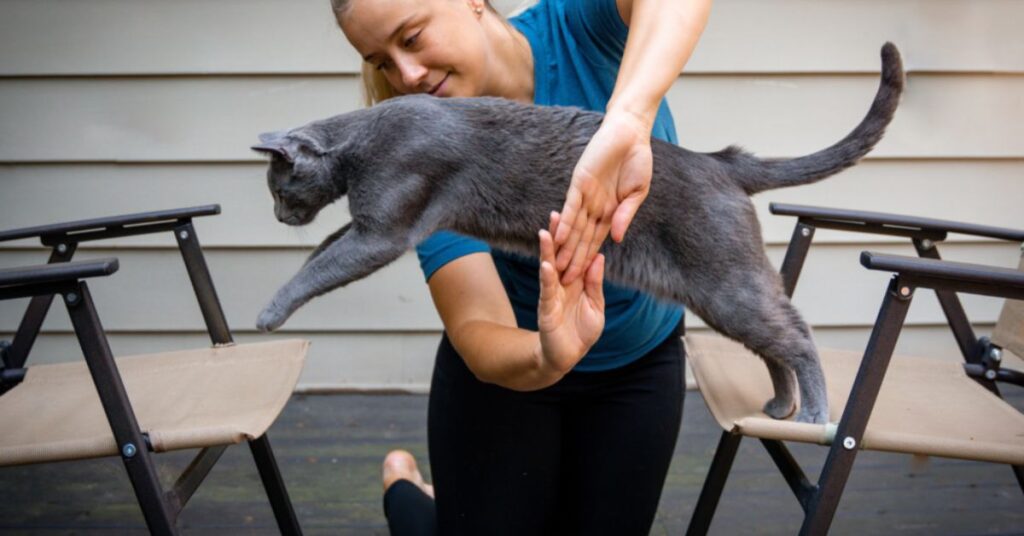My Cat Comes When I Call Him?-A Complete Guide
It is a valuable characteristic to have a cat who responds to your name calls, and it demonstrates the closeness and expertise you share with your feline companion. However, having a cat that defies those expectations has delighted many cat owners, including myself.
It’s a small but colossal element that speaks volumes about our connection and knowledge.
In this text, we will explore why a few cats come while being referred to as, how this behavior can be encouraged, and what it well-known shows about the specific relationship between cats and their owners.
Understanding Cat Behavior:
Cats are frequently stereotyped as unbiased creatures who best come to you once they need something. However, they’re also social animals with robust attachments to human companions. By nature, they’re more selective of their interactions than dogs, but with persistence and understanding, they can be skilled at responding to cues and instructions.
Also Read: How To Register A Cat Without Papers?-A Complete Guide
The Training Journey:
Training a cat can be a rewarding adventure, even though it requires patience, understanding, and a deep appreciation for their conduct. Here are a few recommendations that will help you with the schooling method:
1. Start Early:
Begin training your cat as early as possible. Kittens are typically more receptive to learning new behaviors and can adapt more effortlessly to workouts.
2. Use Positive Reinforcement:

Cats respond well to fantastic reinforcement techniques. Reward favored behaviors with treats, praise, or playtime. This encourages them to copy the other’s behavior.
3. Be Consistent:
Consistency is prime in cat training. Use the identical cues and rewards continually so your cat knows what’s predicted of them.
4. Keep Training Sessions Short:
Cats have brief attention spans, so keep training classes short—around 5 to 10 minutes. Repeat periods during the day for pleasant consequences.
5. Use Clicker Training:
Clicker schooling can be effective with cats. Associate the sound of a clicker with treats or rewards to mark desired behaviours as soon as they occur.
6. Understand Their Limits:
Cats have their own personalities and boundaries. Respect their obstacles and avoid forcing them into conditions that make them feel stressed or uncomfortable.
7. Focus on Basic Commands:
Start with fundamental instructions like “sit down,” “come,” or “live.” These sensible commands can enhance your cat’s safety and verbal exchange.
8. Consider Their Motivation:
Understand what motivates your cat. Some cats are meal-prompted, even as others reply more frequently to play or affection. Tailor your rewards for that reason.
9. Patience is Key:
Training a cat takes time and patience. Be patient with your cat’s development and enjoy small victories along the way.
Also Read: Are Birman Cats Hypoallergenic?-A Complete Guide
Overcoming Challenges:
Overcoming challenges in training or coping with a cat’s conduct can be a look at patience and creativity. Here are a few not-unusual challenges cat proprietors face and recommendations on the way to deal with them:
1. Scratching Furniture:
Cats scratch to mark territory and sharpen claws. Provide suitable scratching posts or pads and encourage use by placing them near favourite scratching spots. Use catnip or toys to attract them to these areas.
2. Not Using the Litter Box:

That could be because of clutter box cleanliness, place, clutter, or scientific problems. Ensure the litter container is easily accessible and effortlessly on hand and in a quiet, non-public location. Consult a vet if the problem persists.
3. Aggression:
Cats can emerge as competitive because of fear, territoriality, or play aggression. Learn to examine your cat’s frame language and provide enrichment to lessen stress. Redirect aggressive conduct with toys or treats.
4. Excessive Meowing:
Cats may additionally meow excessively for interest, hunger, or due to fitness problems. Ensure they have food, water, and enrichment. Ignore interest-searching for meows and reward quiet conduct.
5. Not Coming When Called:
Some cats won’t respond to their name or commands. Use superb reinforcement to accomplish their call with treats or playtime. Practice in quiet, familiar environments.
6. Biting or Scratching During Play:
Cats play difficult, but biting or scratching must be discouraged. Use toys to engage in play and redirect biting or scratching behaviour to appropriate items.
7. Hiding or Avoiding Interaction:
Cats may also hide due to worry, illness, or changes in habits. Create a safe, relaxing space for them and use high-quality reinforcement to inspire socialization.
8. Overweight or Underweight:
Monitor your cat’s weight and modify its diet and exercise accordingly. Consult a vet for guidance on feeding and weight management.
9. Destructive Behavior:
Cats may also chew on cords, knock over gadgets, or dig in flowers. Provide appropriate retailers for their power and interest, including toys, puzzle feeders, or interactive play.
10. Marking Territory:
Cats might also spray or urinate outdoors in the middle box to mark territory. Clean affected areas very well and address underlying stressors. Consult a vet or behaviorist for help.
Advanced Tips and Tricks:
Certainly! Here are a few advanced hints and tricks for cat proprietors who want to deepen their know-how and decorate their dating with their tomcat partners:
1. Clicker Training:
Clicker training can be noticeably powerful for coaching cats’ complicated behaviors. Pair the sound of a clicker with treats to mark favored behaviors at once. This method may teach hints like fetching, high-fiving, or even agility sporting activities.
2. Target Training:

Teach your cat to touch a target (such as a stick or your hand) with its nostril or paw. That can be a basis for coaching more complicated behaviors and agility education. Gradually move the goal to unique places or heights to venture your cat.
3. Harness Training:
Some cats can be educated to wear a harness and leash, allowing them to explore the outside safely under supervision. Start interior with short classes and fine reinforcement, steadily progressing to outdoor environments.
4. Puzzle Feeders and Enrichment:
Use puzzle feeders and interactive toys to provide intellectual stimulation and prevent boredom. Hide treats in puzzle toys or create DIY enrichment sports to encourage natural searching and trouble-fixing behaviors.
5. Desensitization and Counterconditioning:
Use desensitization and counterconditioning techniques if your cat has anxiety or tension desensitization behaviours hiding or aggression). Gradually triggers at a distance and pair them with compelling experiences (like treats or play) to exchange their emotional reaction.
6. Scent and Environmental Enrichment:
Cats depend closely on fragrance for conversation. Artificial pheromones (like Feliway) can create calming environments, specifically during annoying situations like vet visits or moving to a new domestic. Provide vertical spaces, hiding spots, and home windows to enhance their surroundings.
7. Body Language and Communication:
Understand your cat’s frame language and vocalizations to better understand their feelings and needs. Respond appropriately to indicators like tail position, ear moves, and pupil dilation.
Also Read: Why Is My Grey CAT Turning Brown?-A Complete Guide
FAQ’s:
1. What does it mean when your cat comes whilst called?
Cats that easily engage with you and reply to your vocal utterances are fun to live with.
2. Is it regular for a cat to come back while called?
Remember that it’s not normal for cats to return whilst called inside the wild.
3. Why does my cat reply when I call her?
Research shows cats pay greater attention when hearing their caregiver’s voice over a stranger’s.
4. Do cats recognize them?
Most cats recognize their owners’ love and care for them. However, they often show their love for their proprietors in unique ways.
Conclusion:
As I replicate the adventure of teaching Whiskers to return when known, I am reminded of the pleasure and fulfillment our bond brings into my life. It’s a reminder that our efforts towards speaking with our pets are rewarded with loyalty, companionship, and limitless love.
Whether your cat already comes whilst referred to as or you’re simply starting the training process, cherish each moment spent collectively and have fun with the specific courting you proportion.






